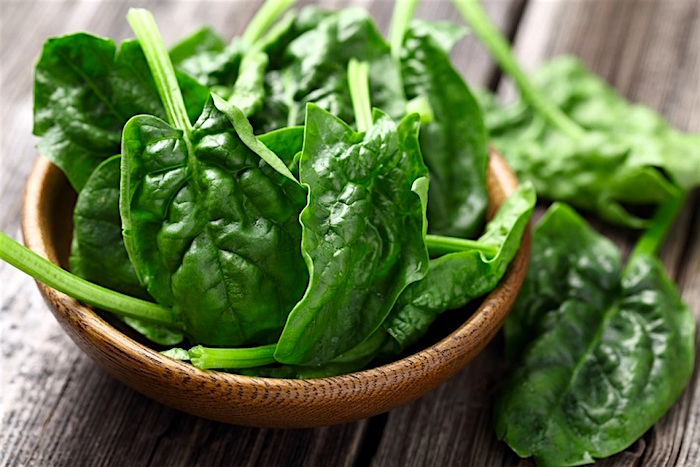 Eating spinach in the form of a smoothie or juice is the best way to obtain optimal levels of the antioxidant lutein, according to research from Linköping University, Sweden. High levels of lutein are found in dark green vegetables, and researchers at the university have compared different ways of preparing fresh spinach in order to maximise the levels of lutein in finished food. The findings are published in the journal Food Chemistry.
Eating spinach in the form of a smoothie or juice is the best way to obtain optimal levels of the antioxidant lutein, according to research from Linköping University, Sweden. High levels of lutein are found in dark green vegetables, and researchers at the university have compared different ways of preparing fresh spinach in order to maximise the levels of lutein in finished food. The findings are published in the journal Food Chemistry.
Many people with atherosclerosis (narrowing of the arteries) have low-grade, chronic inflammation that can be measured in the blood. This inflammation is linked to an increased risk of myocardial infarction.
A research group at Linköping University previously studied the role of the antioxidant lutein, a natural fat-soluble pigment found in plants, particularly in dark green vegetables.
Their research reveals that lutein can dampen inflammation in immune cells in patients with coronary artery disease.
They also showed that lutein can be stored in immune cells, which means it is possible to build up a reserve of lutein within your body. This led researchers to wonder whether it is possible to influence the level of lutein in the blood by increasing lutein dietary intake.
In the new study, the researchers investigated which method of preparation is the best way of obtaining lutein. They chose to study spinach, which contains comparatively high levels of lutein and is eaten by many people.
Just as many other nutrients, lutein is degraded by heat.
“What is unique about this study is that we have used preparation methods that are often used when cooking food at home, and compared several temperatures and heating times. We also investigated methods of preparation in which the spinach is eaten cold, such as in salads and smoothies,” says Lena Jonasson, professor in the Department of Medical and Health Sciences and consultant in cardiology.
In order to simulate methods of preparation that are often used in everyday life, the researchers purchased baby spinach at a supermarket. They subjected the spinach to frying, steaming, or boiling for up to 90 minutes, and measured the lutein content at different times.
Spinach cooked in a soup or stew is not heated at too high a temperature, or for as long as spinach baked in a lasagne, for example. This is why the researchers compared different heating times. It turned out that the heating time is important when spinach is boiled. The longer it is boiled, the less lutein the spinach retains. The cooking method is also important: when spinach is fried at high temperature a large fraction of the lutein is degraded after only two minutes.
The researchers also found that heating spinach in a microwave compensated for the loss of lutein in cooked food to an extent, since more lutein is released from spinach as the plant structure is broken down further by the microwave. “Best is not to heat the spinach at all. And even better is to make a smoothie and add fat from dairy products, such as cream, milk or yoghurt. When the spinach is chopped into small pieces, more lutein is released from the leaves, and the fat increases the solubility of the lutein in the fluid,” says postdoc Rosanna Chung, principal author of the article.
Source: Rosanna W.S. Chung, Per Leanderson, Nelly Gustafsson, Lena Jonasson. Liberation of lutein from spinach: Effects of heating time, microwave-reheating and liquefaction. Food Chemistry, 2019; 277: 573 DOI: 10.1016/j.foodchem.2018.11.023











